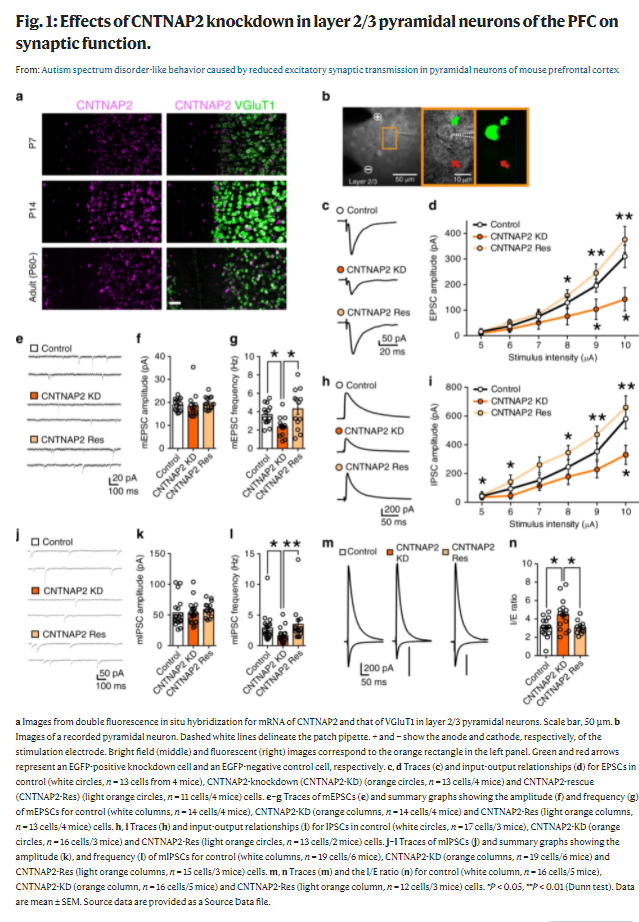Article Open Access
Published: 12 October 2020
Autism spectrum disorder-like behavior caused by reduced excitatory synaptic transmission in pyramidal neurons of mouse prefrontal cortex (マウス前頭前野錐体ニューロンの興奮性シナプス伝達の低下によって引き起こされる自閉スペクトラム障害様行動)
Hiroaki Sacai, Kazuto Sakoori, Kohtarou Konno, Kenichiro Nagahama, Honoka Suzuki, Takaki Watanabe, Masahiko Watanabe, Naofumi Uesaka* & Masanobu Kano*
Nature Communications volume 11, Article number: 5140 (2020)
Abstract
Autism spectrum disorder (ASD) is thought to result from deviation from normal development of neural circuits and synaptic function. Many genes with mutation in ASD patients have been identified. Here we report that two molecules associated with ASD susceptibility, contactin associated protein-like 2 (CNTNAP2) and Abelson helper integration site-1 (AHI1), are required for synaptic function and ASD-related behavior in mice. Knockdown of CNTNAP2 or AHI1 in layer 2/3 pyramidal neurons of the developing mouse prefrontal cortex (PFC) reduced excitatory synaptic transmission, impaired social interaction and induced mild vocalization abnormality. Although the causes of reduced excitatory transmission were different, pharmacological enhancement of AMPA receptor function effectively restored impaired social behavior in both CNTNAP2- and AHI1-knockdown mice. We conclude that reduced excitatory synaptic transmission in layer 2/3 pyramidal neurons of the PFC leads to impaired social interaction and mild vocalization abnormality in mice.
